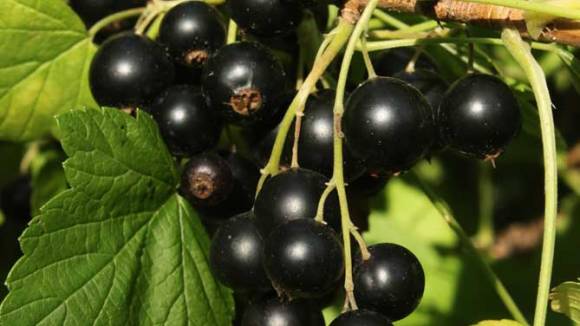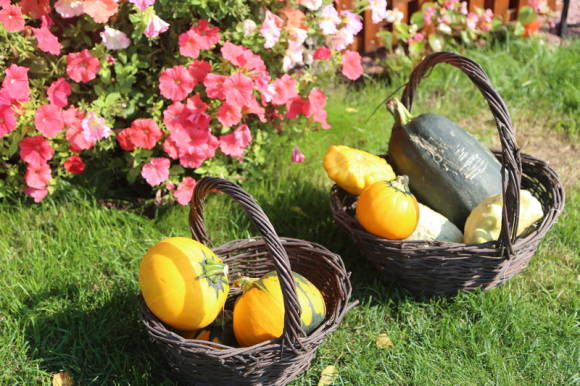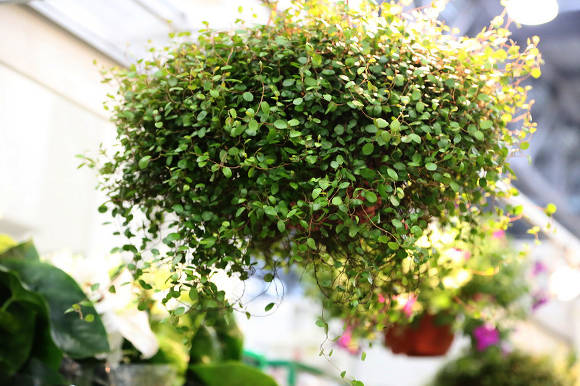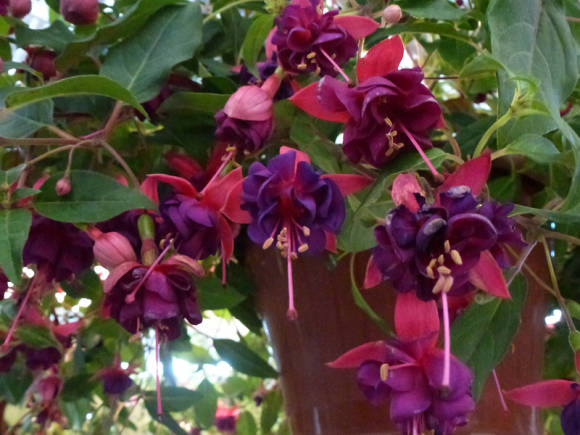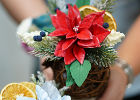
Christmas is a time when families around the world come together under one roof to celebrate and just be together. Christmas customs and traditions vary from country to country. But for many people, one of the best parts of Christmas is the delicious traditional homemade food that is an essential part of every festive winter season. Sitting next to loved ones and feasting together is a classic way to celebrate holidays around the world. While some cultures prepare the main traditional dishes for Christmas itself, for others, Christmas Eve is more important. But, no matter which date is more significant, the mood is the same everywhere. And a pre-planned Christmas menu is part of the celebration wherever you look.
Christmas dishes are imbued with age-old traditions of peoples and the love and warmth of the holidays, no matter what ingredients they contain. Today we will introduce you to just a few of the culinary delicacies that are prepared in different countries for this holiday - from Christmas coliva, baked turkey, stews, fried carp and gravlax - to stollen, Christmas logs and gingerbread cookies. It is these foods that make Christmas a special and recognizable holiday in homes around the world.
Bulgaria
Christmas in Bulgaria is called Koleda and is one of the most beloved family holidays. Oddly enough, this holiday in Bulgaria does not have a pronounced religious connotation, the Bulgarian Koleda is for everyone absolutely. On Christmas Eve, which in Bulgarian is called “B'dni evening” or “Malka Koleda”, the whole family should gather at the festive table, on which there are only lenten dishes, which will traditionally be an odd number: seven, nine or eleven, and salt and pepper are considered for a separate dish. On this day, pies with surprises are sure to be baked. In the old days, nuts, dogwood twigs (for Bulgarians, this is a symbol of health and strength) or coins were baked in them, but today, most often, a small paper message with good wishes is hidden in a Bulgarian holiday cake.
Kolivo (Kolivo) - boiled wheat with sugar and walnuts - is usually the first dish served on Christmas Eve in Bulgaria. In Russia and Poland, its analogue is the Christmas kutia. Colivo is served with honey, poppy seeds, other grains, rice, beans, or dried fruit, and can be prepared in a variety of ways. This dish is closely related to ancient Orthodox traditions. Colivo is also a traditional Christmas dish in Serbia, Romania and Georgia.
Recipe: Christmas colivo
 |  |
After attending the festive liturgy in the church, Bulgarians gather again at the festive table to taste a special Christmas bread - "goddess", also called god's pita, god's bread, holy bread. It is necessarily decorated with a cross and dough figurines that symbolize fertility: ears of wheat, a thunderstorm of grapes, the sun, a bee. During the feast, the owner of the house raises the bread high above his head and pronounces wishes for peace and prosperity, after which the bread is broken and distributed to the participants of the feast. Each of those present at the Christmas table will definitely get a piece of this festive loaf.
Germany
The main symbols of Christmas in Germany are the tree and the Christmas festival (Weihnachtsfest), which take place throughout the country from November 11 until Christmas Eve in the main squares of cities and rural settlements. Each region of the country has its own customs, but throughout the country, souvenir nutcrackers, fried chestnuts, baked apples, gingerbread and stollens are common attributes of this major holiday of the year.
Herring salad Heringsalat - a traditional food for dinner on Christmas Eve for many generations of Germans.Traditionally, it is prepared by the oldest member of the family. The salad consists of salted herring, beets, pickled cucumbers and mayonnaise, sometimes with the addition of boiled meat, has a corresponding Christmas - red - color.

Weihnachtskarpfen - holiday carp has been one of the main Christmas dishes in Germany for hundreds of years. One of the favorite German Christmas traditions is also associated with this dish - after dinner, fish scales from cooked carp are put in a wallet so that the year is financially successful.
Weihnachtskarpfen cooked differently in different parts of the country. In southern carp, they are cooked in portions, which are breaded and fried, and served with cucumber or potato salad, lemon wedges, ghee or remoulade sauce. In northern Germany, it is more often served at the Christmas table. Karpfen Blau - blue carp with parsley or boiled potatoes and horseradish sauce. The fish acquires an unusual color in the course of a special cooking technology: carp are boiled in almost boiling salted water with vinegar and herbs over low heat. The third popular way to cook carp for Christmas is oven-baked carp stuffed with various vegetables, served with baked tomatoes, mushrooms and Salzkartoffeln - boiled in salted water and then fried potatoes.
Another traditional dish on the German Christmas table is Weihnachtsgans - fried goose stuffed with apples, chestnuts, onions or prunes. Every self-respecting German restaurant and every German family have their own recipes for preparing a Christmas goose. Interestingly, regardless of the type of filling, by tradition, such a goose is prepared with a special set of spices - salt, black pepper, marjoram and ... wormwood. Usually red cabbage, dumplings or dumplings are used as a garnish. Weihnachtsgans in the Alsatian style it is a goose stuffed with sausages and sauerkraut.
Recipe: Christmas goose stuffed with chestnuts and fruits with Cumberland sauce

Recipes for many Christmas dishes have been preserved in Germany unchanged since the Middle Ages and pagan times. Traditional German Christmas pastries were once gifts to pagan gods, whose favor they tried to get hold of sweets: gingerbread, marzipan, muffins and pies. But even today, a large, beautiful dish with nuts, apples and pies baked according to the canon a week before Christmas is always served on the German Christmas table. These treats are deeply symbolic: apples remind of the tree of knowledge of good and evil; nuts in shell - about the need to overcome difficulties on the way to the secrets of life. On the Christmas table, the Germans will definitely have gingerbread - lebkuchens, stollen or Baumkuchen - "Pie tree". Baumkuchen - a special type of old Christmas pastry made from butter, eggs, sugar, vanilla, salt and flour. The cake is called so because its golden cut resembles a fresh cut from a tree with annual rings. The cooking process is quite unusual: a special wooden roller is dipped in batter, which is browned over an open fire, then the procedure is repeated several more times. In the old days, it was cooked using a small wooden log, today there are specially designed bakery appliances for it.
Read articles:
- Dresden Stollen, or the taste of real Christmas
- Nuremberg Lebkuchen: a Christmas gingerbread legend

One of the main attributes of any Christmas market and Christmas itself in Germany, of course, is the famous German mulled wine - hot red wine with spices, which is always prepared these days in all cafes and restaurants or just on the streets on an open fire. German mulled wine can be both weak and strong - with the addition of cognac, rum or various strong herbal infusions. The whole world knows about mulled wine.This drink has long stepped outside Germany and has become very popular on winter holidays in different parts of the world, especially in countries with cold climates. But with another strong Christmas drink in Germany, the world is much less familiar. It is called the "fiery tooth". A punch is prepared in a large vat, a large sugar "tooth" soaked in expensive rum is placed above it, then the "tooth" is set on fire and, melting, the sugar begins to flow into the punch in a liquid flame, where it continues to burn. The spectacle is fantastic, and the taste, frankly, is worth trying!
Read the article All the subtleties of mulled wine, or the king is played by the retinue
Another constant drink on the festive table of the Germans - Eierlikör or egg liqueur, which is a mixture of egg yolks, a variety of spirits, sugar, vanilla, and sometimes cream. Traditionally, egg liqueur is served in a wide glass with whipped cream, generously sprinkled with cocoa powder on top. This drink is served in Germany as an aperitif or with dessert, and almost always and everywhere.
France
A Christmas dinner in France is a very important event, for which every home begins to prepare a month in advance. It even has a special name - Reveillon (awakening). Traditionally, the whole family should gather at their parents' house, and everyone should participate in the preparation of the holiday treat, because traditional Christmas dishes in France are complex and require not only a lot of skill, but also time. So there is something for everyone, including children.
During the winter holidays, the French prefer what they love the most: oysters, foie gras and snails. Believe it or not, about half of the annual oyster harvest is consumed by the French during Christmas week. The classic Christmas version of serving foie gras in French - with a special loaf of black or gray bread, fig jam and special coarse salt. Oysters (the most popular number 3 or 5) in a classic serving - with lemon. A less well-known serving option in our country is oysters baked in the oven with cheese. French housewives buy Christmas snails in a supermarket or on the market, already stuffed with a special seasoning of chopped parsley and garlic in olive oil; before serving on the festive table, all that remains is to put them in the oven.
 |  |
Favorites among the main dishes of the French Christmas table: a large turkey stuffed with chestnuts, truffles, mushrooms, pork, poultry liver and marinated in wine or cognac; duck marinated in orange, tangerine, grapefruit and anise sauce; chicken baked with poultry liver, ham, celery and nuts. Baked poultry is served with spices and a garnish of chestnuts, pears and other vegetables and fruits. In addition to poultry, a rabbit can also be baked. And yet the king of this feast is the Christmas goose - an international attribute of the holiday. In France, goose dishes are so popular that a special breed of geese - Toulouse - weighing up to 12 kg was even bred, so that it would be enough for a large family! France exports huge numbers of these geese around the world every year before Christmas.
At the Christmas table, they drink good wine, strictly selected for each dish. Glasses of champagne are traditionally raised at midnight, but it is also allowed to wash them down with foie gras or desserts. The fashion for vodka came to France not so long ago, and the French have not yet learned to understand this drink, therefore they drink it in small sips.
Imagine a French festive table without the traditional Christmas log under the name Bouche de Noel (Bûche de Noël) is simply impossible - this is one of the main dishes of Christmas in this country. Initially, Bouche de Noel was a long roll with fat cream, decorated on top with forest attributes of chocolate and berries. Today's Bouche de Noel is a thin sponge cake with a light filling, rolled into a roll and covered with chocolate icing.
Interestingly, in France, Christmas food should be served not only to people, but also to our smaller brothers. In France, special attention is paid to cats, which are unacceptable to leave them hungry on this day, and to birds, for which a lot of feeders are built for the holiday.
Italy
In Italy, Christmas is the main family holiday. On the eve of Christmas, it is customary to set a lenten table, which means that at the head of the table there is a fish, but what a fish! In the traditional Christmas menu of Italians capitone or anguilla (eel, fried or pickled), and dried cod baccalàusually deep-fried.
In any home these days, you will see panettone - a traditional sweet Christmas bread with fruits and nuts. The next day, for a gala dinner, cold cuts, tortellini in broth, lasagna or pasta with ragout will be prepared, and as the main treat - stuffed capon or baked turkey, lamb or cold cuts in broth. For sweets, Christmas panettone with English cream or warm sabayon will be served. Of course, there will be sweets, fruits and nuts on the table, but you will not see apples anywhere, since they are like a reminder of original sin.
Recipe: Panettone

Greece
Christmas in Greece, above all else, is one of the main religious holidays with the obligatory attendance of the night service in the temple. They must take a home icon with them, and after the service they are the first to bring it into the living quarters upon their return. This is one of those main dates that the inhabitants of island and mainland Greece never pass by. The customs of celebrating this great celebration have evolved over the centuries and have reached the modern era.
After visiting the church, Greek families sit down at the festive table, on which the main attribute of Christmas is necessarily present - sweet bread, which is here called Christopsomo (Χριστόψωμο), which translates as "the bread of Christ." The Greeks believe that he carries the blessing of Christ. This bread is sweet and must be decorated with a cross, but not cream. Sometimes on top there are figurines of birds, animals or other Christian symbols sculpted from dough. The taste of Christopsomo is very reminiscent of the usual Easter cake. Interestingly, it is customary among the Greeks to prepare the ingredients for Christopsomo long before Christmas. In the summer, in the countryside, rose water is still prepared with their own hands, which is then included in the dough for Christopsomo. Honey is bought only of the highest quality, usually in May, the first pitch. Nuts and raisins are stored in the fall. At the time of flowering, herbs are collected for the preparation of spices.
 |  |
The main meat for Christmas in Greece is pork. There should be a roasted pig or wild boar on the table. Before frying, pig meat is usually soaked in wine. Be sure to cook jellied meat from pork, and homemade sausage is made from intestines filled with meat and spices. The combination of pork with celery is especially popular in this country. It is believed that the pig does not allow evil spirits into the dwelling, and in the company with celery, such a dish becomes an irreplaceable useful product on the festive table.
For dessert, the Greeks traditionally serve sweet cookies with orange zest - melomakarona (Melomakarona / μελομακάρονα), which tastes very similar to baklava. This cookie is baked by the whole family. Immediately after baking, melomakarons are soaked in honey-sugar glaze, and then sprinkled with walnuts. There is also a less traditional version of this recipe dipped in dark chocolate.
Recipe: Melomakarona (Greek Christmas cookies)
The Greeks serve various wines as drinks on the Christmas table, and recently the custom of drinking liqueurs has taken root.
Spain
For Spaniards, Christmas is a time of joy, shared with friends and family. The Spanish version of Christmas is an original blend of Christian and pagan traditions.Christmas Eve or Nochebuena in Spain is usually celebrated in the family circle, when all relatives gather around a colorful festive table with an abundance of dishes, wine and all kinds of sweets. After a festive meal, Catholics head to the midnight Mass called Misa del Gallo. All this takes place accompanied by the singing of the famous Christmas carols, accompanied by passionate Spanish guitars, hand drums and tambourines.
On a lavish table on Christmas Eve, the Spaniards put on traditional Christmas dishes that can vary from region to region, but Pavo Trufado de Navidad (turkey with truffles) is one of the staple Christmas dishes for the entire country. Dinner traditionally begins with Carne d'Olya Christmas soup. To prepare such a soup, a large piece of meat is boiled for several hours, after which a special variety of pasta is added to the meat, in shape they are similar to huge snails. Soup meat is used as part of the main course. There is always a large number of Spanish appetizers on the table - tapas: langoustines, jamon and eels are some of the most expensive delicacies that an ordinary Spanish family can afford only for a holiday. There will also be clams, and baked bream with potatoes, and fried lamb, and suckling pig. The excellent Spanish sparkling wine Cava is poured at the table without restriction.

Traditional Spanish Christmas sweets - a variety of desserts with almonds, honey, chocolate and fruits. The most popular and well-known:
- turron (turron) - perhaps the most famous almond Christmas candy in the world of Moorish origin; the main composition includes honey, sugar and egg whites, there are many different types, which in any Spanish supermarket occupy whole departments in the confectionery rows;
- polvorones - unusually crumbly flavored cookies with nuts;
- pestinos (pestiños) - cookies fried in olive oil and then covered with sugar and sesame seeds;
- mantekados (mantecados) - light crumbly cookies on pork lard with a lot of sugar;
- Marzipan, a pasty mixture of almonds, egg yolk and sugar, is one of the most popular Spanish Christmas sweets on the table.

England
The English Christmas table is first served with smoked salmon with black bread and shrimp as an appetizer. And the main dish of the holiday is a baked goose or turkey topped with gooseberry sauce. And only here this dish is traditionally served at the table along with small sausages, wrapped in bacon, which are called pigs in blankets (pig in a blanket).
Also, according to tradition, on the festive table there are a variety of oven-baked vegetables: potatoes, parsnips, chestnuts, turnip and turnip puree, boiled carrots cut into thin slices and boiled Brussels sprouts.
Like nowhere else in the world, in England on this day there are not only special Christmas main dishes, but also sauces! The most unusual of them is bread, made from slices of bread, milk, cream, onions and cloves. Another tribute to ancestral traditions is cranberry sauce, which is also a must on the Christmas table.
An unusual element of the obligatory festive setting of the English Christmas table is a cracker, which lies in the place of each guest. When all the main dishes have been tasted, it's time to blow up the cracker. Inside is traditionally a small royal crown and a small souvenir.
The crown of the festive feast is desserts. The main Christmas dessert is Christmas pudding or plum pudding (plum pudding, which means fire pudding)stuffed with raisins, honey, bread crumbs, prunes, vanilla and almonds. Pudding is also considered an English family tradition. It is prepared by the whole family, and the recipe is inherited. Before serving, plum pudding is poured over with cognac or rum and set on fire.
Recipe: English christmas pudding
Among the record holders for the number of eaten on Christmas - mincemeat pie or a sweet English pie filled with dried fruits and a spice mixture, on behalf of which - mincemeat - got its name and the pie itself. Mincemeat contains nutmeg, cinnamon and cloves, traditional Christmas spices. In Britain, these pies are considered lucky, so the British will never refuse the Christmas pie offered to them, and they eat them with great pleasure almost all December.

For Christmas treats, they prefer to drink white or red wine or hot mulled wine. Also on the tables at Christmas you can see several types of ports and hot punch. And in the north of England, residents prepare a special Christmas drink made from cereals, honey and cream. The most traditional Christmas drink is a mixture of hot ale with baked apple pulp, generously seasoned with spices and sugar.
Recipe: New Year's punch
Sweden
In Sweden, fish, ham, porridge and special Christmas bread will be served at the Christmas table. In this country, fried pork head is a favorite of the Christmas feast. Second place, no doubt, goes to the traditional holiday food called Yanson's Temptation. Janson's Temptation is an incredibly tasty fish-potato casserole with cream.

Hungary
Like anywhere in the world, in this country, Christmas dinner is subject to strict traditions that strictly regulate not only the composition and number of dishes (there may be 7 or 13), but even their sequence of serving. The feast always begins with bread with garlic, followed by a nut and a slice of apple, then it is the turn of noodles, beans and curd cakes. National pastries with poppy seeds or marmalade are served as a dessert. Only after all these obligatory dishes that open the celebration, oddly enough, is hot cabbage or beans soup served.
Finland
Christmas is the most traditional of all Finnish holidays. This is the time for good communication with family and close relatives, as well as for the obligatory invitation to the celebration of non-family friends. Good old, traditional Finnish food is on the Christmas table year after year.
In Finland, winter holidays are a time of hot and rich meat stews, numerous hearty cereals and a variety of potato dishes. The Christmas table is decorated with a ruddy baked ham, richly flavored with mustard. Of the abundance of fish dishes, gravlax - salted salmon and lutefix - fish soaked in an alkaline solution are required. As a side dish, it is customary to serve beet salad and a special rutabaga casserole.
Finnish Christmas dessert - youlutortut (joulutortut) - Christmas tart (pie) in the shape of a four-pointed star, which is made from puff pastry stuffed with plum jam or jam, ideally contrasting with the puff pastry. Sometimes this pie is also called Tähtitorttu or Star Pie. Perhaps its greatest charm is its simplicity - a star or windmill cookie that boasts an extraordinary crunchy puff pastry with the smooth sweetness of a spoonful of jam! In this country, the main principle of life is nothing superfluous, and real Finnish Christmas is just youlutortut, a mug of hot glugi and the comfort of a Christmas house.

The most popular holiday drink among the Finns is glögi (glögi), which is a Finnish version of the mulled wine known in Scandinavia as glögg, and in German-speaking areas Glühwein... Usually, in Finnish houses, they drink glugs with gingerbread. Glögi based on red wine differs from the classic German mulled wine in the greater sweetness that honey and spices impart to the drink. Raisins and peeled almonds are most often added to the finished drink. Sometimes glögs are made from apple cider or blackcurrant or lingonberry juice.Of course, most Finns today buy ready-made glögs from specialized wine shops. Today, on the Finnish part of the culinary Internet, you can find hundreds of the most exotic recipes for glögi, for example, with red grapefruit juice, cherries and almond liqueur; or with strawberry juice flavored with cinnamon, vanilla and ginger.
Cm. Finnish Christmas pastries Joulutortut, Finnish glögi "Vittresk"
